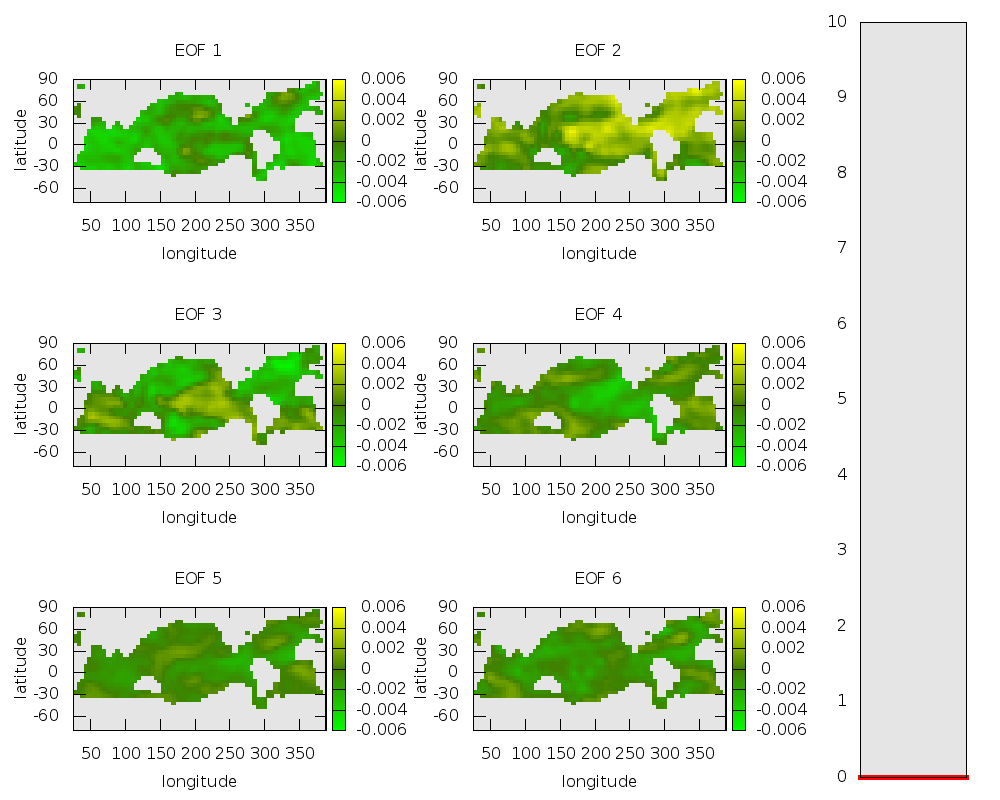The IAP RAS researchers developed an approach to the description of the processes occurring in complex (high-dimensional) systems, which is based on the construction of empirical low-dimensional models in the form of random dynamic systems (A. M. Feigin,
E. M. Loskutov, and D. N. Mukhin). The annually increasing interest in problems of predictive reconstruction (construction of parameterized nonautonomous mathematical models) of systems that generate the observed processes is due to the complexity of natural objects studied in different areas of science, which in many cases precludes the creation of sufficiently universal and robust models on the first-principles basis. On the other hand, the existing methods of constructing models of the system evolution operator in time series is inapplicable to the analysis of the real data because of the high dimension of the system, a substantial random component, limited sampling, etc.
To describe the observed high-dimensional dynamics and reconstruction of the key properties of an unknown dynamic system, it is proposed to use stochastic models in the form of random dynamic systems. Underlying this approach is the hypothesis that the basic dynamic properties determining the observed mode of behavior of the system can be described by a finite number of degrees of freedom, while other, small-scale properties not included in these equations have the form of a stochastic perturbation that is not uniform over the phase space. A much wider class of systems for which this description is adequate is an important advantage of the stochastic description. Typically, the time series observed in a real experiment are short and/or noisy, so neither the embedding dimension can be estimated, nor the fact can be established that the system which generated them is deterministic. In this situation, the stochastic description is much more adequate since it is not based on these estimates.
The developed approach has successfully been applied to the analysis of time series of different nature and prediction of the evolution of the systems which generated them. In particular, the time series generated by different-complexity models of the atmospheric-oceanic system underlying the El Niño phenomenon of anomalous surface-temperature oscillations of the Pacific in its equatorial part have been analyzed. The possibility of correct prediction of critical transitions as significant qualitative changes in the observed dynamics of the system using the empirical models has been demonstrated.
|
Prediction of critical transitions in the dynamics of the El Niño phenomenon. The time series of the sea surface temperature (SST) at one of the spatial points is shown on the top. The time series of the main component of the basis of empirical orthogonal functions (EOF-1) is shown in the center. The "red" fragment is the basis for prediction of the future "green" behavior. The result of prediction using the model is shown in the lower panel
|






